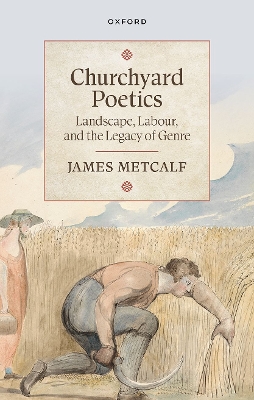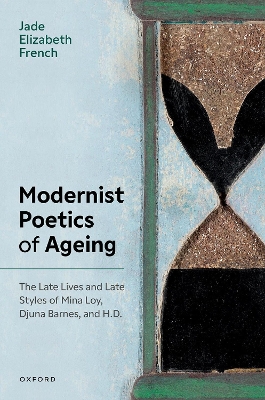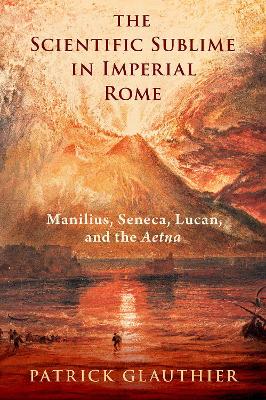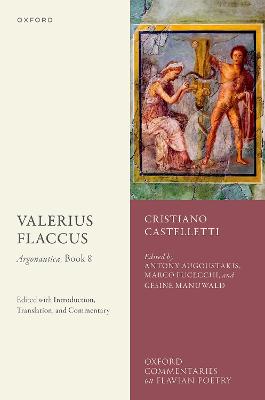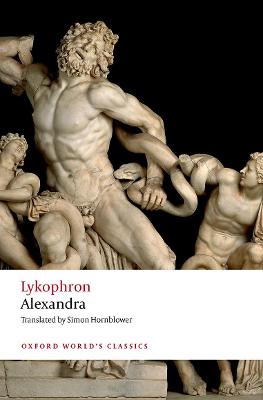Greek Erotic Epigram
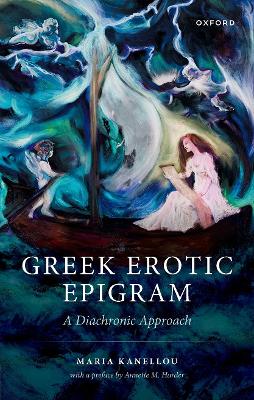 -10%
portes grátis
-10%
portes grátis
Greek Erotic Epigram
A Diachronic Approach
Kanellou
Oxford University Press
04/2025
320
Dura
9780198816140
Pré-lançamento - envio 15 a 20 dias após a sua edição
Descrição não disponível.
Acknowledgemets
List of Abbreviations
Introduction
1. Why Write a Book on the Diachronic Study of Erotic Epigrams?
2. The Contents of the Book
1: The Lamp as a Vehicle for Exploring the Lover's Emotions
1. First Appearances of the Lamp Motif in Asclepiades
2. The Development of the Motif in the Meleagrian Epigrams
3. Outside the Melegrian Garland: Philodemus and Statyllius Flaccus
4. Marcus Argentarius and the Lamp's Prophetic Abilities
5. The Survival of the Lamp in the Cycle of Agathias
6. Conclusions
2: Unboxing Sea and Nautical Metaphors in Erotic Epigram
1.1 The Ship-Prostitute Epigrams and their Intertextual Background
1.2 Alcaeus and the Ship-Prostitute
1.3 Theognis and Aristophanes: Ship-Imagery and the Ambiguities of Control
2.1 The Ship-Prostitute in the Epigrams: Hetaerae Described as Ships
2.2 Ships Described in Language Applicable to Hetaerae
3.1 Hellenistic Epigram and the Sea of Love
3.2 The Heterosexual Epigrams
3.3 The Homoerotic Epigrams
4.1 The Survival of Sea and Nautical Metaphors after Meleager's Garland
4.2 Sea Metaphors in their Sexual Form: The Case Study of Autodemon AP 11.29
4.3 Further Examples of Sexual Sea Metaphors: The Anonymous AP 11.220 and Rufinus AP 5.35
4.4 The Sea of Love in Macedonius Consul AP 5.235
5. Conclusions
3: Comparing the Beloved with the Supreme Goddess of Beauty
1. The Beloved's Praise in the Poetic Tradition: The Limitations of Hyperbole
2. Implied Comparison with Aphrodite: Nossis' Dedicatory Epigrams
3. Hellenistic Queens and Aphrodite: Three Posidippean Epigrams
4. Asclepiades or Posidippus AP 5.194: Indirect Links Between a Non-Royal Woman and Aphrodite
5.1 Antipater of Sidon: Staying within Limits (AP 9.567 and 7.14)
5.2 Antipater of Sidon: Stretching the Boundaries (AP 7.218)
6. The 'Apotheosis' of the Motif in the Meleagrian Epigrams
7. Comparing the Male Beloved with Eros
8.1 The Motif after Meleager: Marcus Argentarius and Rufinus
8.2 The Motif in the Cycle of Agathias
9. Conclusions
4: Eros and the Erotes: The Tormentors of Humans
1.1 Eros' Disguises: Recollections of Lyric Poetry
1.2 Eros the Crawling Creature
2. Amalgamation of Different Portrayals of Eros in the Same Epigram
3.1 From the Single Eros to the Erotes: The Motif's Literary Roots
3.2 Multiple Erotes for Multiple Effects
4. Conclusions
Epilogue
Bibliography
General Index
Index Locorum
List of Abbreviations
Introduction
1. Why Write a Book on the Diachronic Study of Erotic Epigrams?
2. The Contents of the Book
1: The Lamp as a Vehicle for Exploring the Lover's Emotions
1. First Appearances of the Lamp Motif in Asclepiades
2. The Development of the Motif in the Meleagrian Epigrams
3. Outside the Melegrian Garland: Philodemus and Statyllius Flaccus
4. Marcus Argentarius and the Lamp's Prophetic Abilities
5. The Survival of the Lamp in the Cycle of Agathias
6. Conclusions
2: Unboxing Sea and Nautical Metaphors in Erotic Epigram
1.1 The Ship-Prostitute Epigrams and their Intertextual Background
1.2 Alcaeus and the Ship-Prostitute
1.3 Theognis and Aristophanes: Ship-Imagery and the Ambiguities of Control
2.1 The Ship-Prostitute in the Epigrams: Hetaerae Described as Ships
2.2 Ships Described in Language Applicable to Hetaerae
3.1 Hellenistic Epigram and the Sea of Love
3.2 The Heterosexual Epigrams
3.3 The Homoerotic Epigrams
4.1 The Survival of Sea and Nautical Metaphors after Meleager's Garland
4.2 Sea Metaphors in their Sexual Form: The Case Study of Autodemon AP 11.29
4.3 Further Examples of Sexual Sea Metaphors: The Anonymous AP 11.220 and Rufinus AP 5.35
4.4 The Sea of Love in Macedonius Consul AP 5.235
5. Conclusions
3: Comparing the Beloved with the Supreme Goddess of Beauty
1. The Beloved's Praise in the Poetic Tradition: The Limitations of Hyperbole
2. Implied Comparison with Aphrodite: Nossis' Dedicatory Epigrams
3. Hellenistic Queens and Aphrodite: Three Posidippean Epigrams
4. Asclepiades or Posidippus AP 5.194: Indirect Links Between a Non-Royal Woman and Aphrodite
5.1 Antipater of Sidon: Staying within Limits (AP 9.567 and 7.14)
5.2 Antipater of Sidon: Stretching the Boundaries (AP 7.218)
6. The 'Apotheosis' of the Motif in the Meleagrian Epigrams
7. Comparing the Male Beloved with Eros
8.1 The Motif after Meleager: Marcus Argentarius and Rufinus
8.2 The Motif in the Cycle of Agathias
9. Conclusions
4: Eros and the Erotes: The Tormentors of Humans
1.1 Eros' Disguises: Recollections of Lyric Poetry
1.2 Eros the Crawling Creature
2. Amalgamation of Different Portrayals of Eros in the Same Epigram
3.1 From the Single Eros to the Erotes: The Motif's Literary Roots
3.2 Multiple Erotes for Multiple Effects
4. Conclusions
Epilogue
Bibliography
General Index
Index Locorum
Este título pertence ao(s) assunto(s) indicados(s). Para ver outros títulos clique no assunto desejado.
Acknowledgemets
List of Abbreviations
Introduction
1. Why Write a Book on the Diachronic Study of Erotic Epigrams?
2. The Contents of the Book
1: The Lamp as a Vehicle for Exploring the Lover's Emotions
1. First Appearances of the Lamp Motif in Asclepiades
2. The Development of the Motif in the Meleagrian Epigrams
3. Outside the Melegrian Garland: Philodemus and Statyllius Flaccus
4. Marcus Argentarius and the Lamp's Prophetic Abilities
5. The Survival of the Lamp in the Cycle of Agathias
6. Conclusions
2: Unboxing Sea and Nautical Metaphors in Erotic Epigram
1.1 The Ship-Prostitute Epigrams and their Intertextual Background
1.2 Alcaeus and the Ship-Prostitute
1.3 Theognis and Aristophanes: Ship-Imagery and the Ambiguities of Control
2.1 The Ship-Prostitute in the Epigrams: Hetaerae Described as Ships
2.2 Ships Described in Language Applicable to Hetaerae
3.1 Hellenistic Epigram and the Sea of Love
3.2 The Heterosexual Epigrams
3.3 The Homoerotic Epigrams
4.1 The Survival of Sea and Nautical Metaphors after Meleager's Garland
4.2 Sea Metaphors in their Sexual Form: The Case Study of Autodemon AP 11.29
4.3 Further Examples of Sexual Sea Metaphors: The Anonymous AP 11.220 and Rufinus AP 5.35
4.4 The Sea of Love in Macedonius Consul AP 5.235
5. Conclusions
3: Comparing the Beloved with the Supreme Goddess of Beauty
1. The Beloved's Praise in the Poetic Tradition: The Limitations of Hyperbole
2. Implied Comparison with Aphrodite: Nossis' Dedicatory Epigrams
3. Hellenistic Queens and Aphrodite: Three Posidippean Epigrams
4. Asclepiades or Posidippus AP 5.194: Indirect Links Between a Non-Royal Woman and Aphrodite
5.1 Antipater of Sidon: Staying within Limits (AP 9.567 and 7.14)
5.2 Antipater of Sidon: Stretching the Boundaries (AP 7.218)
6. The 'Apotheosis' of the Motif in the Meleagrian Epigrams
7. Comparing the Male Beloved with Eros
8.1 The Motif after Meleager: Marcus Argentarius and Rufinus
8.2 The Motif in the Cycle of Agathias
9. Conclusions
4: Eros and the Erotes: The Tormentors of Humans
1.1 Eros' Disguises: Recollections of Lyric Poetry
1.2 Eros the Crawling Creature
2. Amalgamation of Different Portrayals of Eros in the Same Epigram
3.1 From the Single Eros to the Erotes: The Motif's Literary Roots
3.2 Multiple Erotes for Multiple Effects
4. Conclusions
Epilogue
Bibliography
General Index
Index Locorum
List of Abbreviations
Introduction
1. Why Write a Book on the Diachronic Study of Erotic Epigrams?
2. The Contents of the Book
1: The Lamp as a Vehicle for Exploring the Lover's Emotions
1. First Appearances of the Lamp Motif in Asclepiades
2. The Development of the Motif in the Meleagrian Epigrams
3. Outside the Melegrian Garland: Philodemus and Statyllius Flaccus
4. Marcus Argentarius and the Lamp's Prophetic Abilities
5. The Survival of the Lamp in the Cycle of Agathias
6. Conclusions
2: Unboxing Sea and Nautical Metaphors in Erotic Epigram
1.1 The Ship-Prostitute Epigrams and their Intertextual Background
1.2 Alcaeus and the Ship-Prostitute
1.3 Theognis and Aristophanes: Ship-Imagery and the Ambiguities of Control
2.1 The Ship-Prostitute in the Epigrams: Hetaerae Described as Ships
2.2 Ships Described in Language Applicable to Hetaerae
3.1 Hellenistic Epigram and the Sea of Love
3.2 The Heterosexual Epigrams
3.3 The Homoerotic Epigrams
4.1 The Survival of Sea and Nautical Metaphors after Meleager's Garland
4.2 Sea Metaphors in their Sexual Form: The Case Study of Autodemon AP 11.29
4.3 Further Examples of Sexual Sea Metaphors: The Anonymous AP 11.220 and Rufinus AP 5.35
4.4 The Sea of Love in Macedonius Consul AP 5.235
5. Conclusions
3: Comparing the Beloved with the Supreme Goddess of Beauty
1. The Beloved's Praise in the Poetic Tradition: The Limitations of Hyperbole
2. Implied Comparison with Aphrodite: Nossis' Dedicatory Epigrams
3. Hellenistic Queens and Aphrodite: Three Posidippean Epigrams
4. Asclepiades or Posidippus AP 5.194: Indirect Links Between a Non-Royal Woman and Aphrodite
5.1 Antipater of Sidon: Staying within Limits (AP 9.567 and 7.14)
5.2 Antipater of Sidon: Stretching the Boundaries (AP 7.218)
6. The 'Apotheosis' of the Motif in the Meleagrian Epigrams
7. Comparing the Male Beloved with Eros
8.1 The Motif after Meleager: Marcus Argentarius and Rufinus
8.2 The Motif in the Cycle of Agathias
9. Conclusions
4: Eros and the Erotes: The Tormentors of Humans
1.1 Eros' Disguises: Recollections of Lyric Poetry
1.2 Eros the Crawling Creature
2. Amalgamation of Different Portrayals of Eros in the Same Epigram
3.1 From the Single Eros to the Erotes: The Motif's Literary Roots
3.2 Multiple Erotes for Multiple Effects
4. Conclusions
Epilogue
Bibliography
General Index
Index Locorum
Este título pertence ao(s) assunto(s) indicados(s). Para ver outros títulos clique no assunto desejado.

